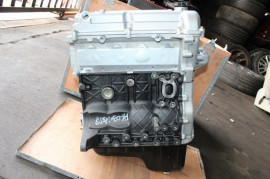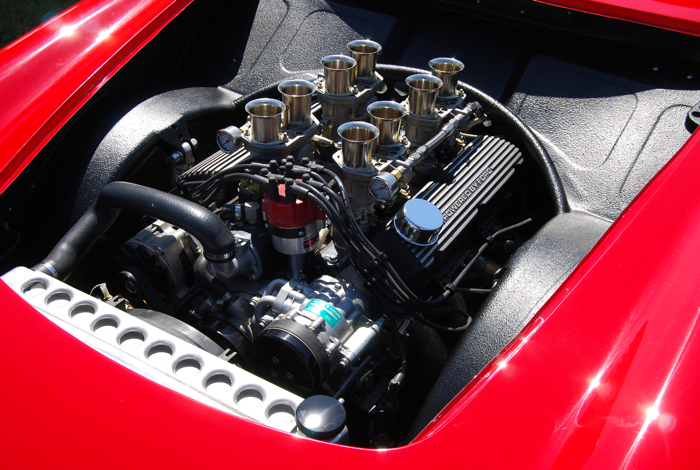Affordable Opel Corsa Engine Options for Your Spending plan
Affordable Opel Corsa Engine Options for Your Spending plan
Blog Article
Checking Out the Inner Workings of a Compact Vehicle's Engine System
As chauffeurs, we usually take for provided the elaborate processes that take place within the boundaries of our lorry's engine system. The small yet complex machinery that propels us forward is a marvel of engineering accuracy and control. From the regulated surges in the burning chamber to the careful timing of gas injection, every component plays a critical duty in the smooth operation of the engine. In this expedition of a small vehicle's engine system, we will decipher the inner workings of this mechanical symphony, clarifying the mysteries that drive us ahead on our day-to-day journeys.
Combustion Refine Review
The combustion process in a small car's engine system is a critical device that effectively transforms gas into energy to power the lorry. This procedure happens within the burning chamber of the engine, where gas and air mix, fire up, and produce regulated explosions. The combustion process includes 4 primary phases: intake, compression, exhaust, and power.
Throughout the intake phase, the piston relocates downward, pulling in a mixture of air and gas into the combustion chamber. The following phase, compression, includes the piston moving upward, pressing the air-fuel combination to increase its strength. Consequently, in the power stage, the ignition system stirs up the pressed blend, resulting in a quick development of gases that compels the piston pull back. This descending activity produces the power required to drive the vehicle. Ultimately, in the exhaust phase, the burned gases are gotten rid of from the combustion chamber via the exhaust shutoff, preparing the chamber for the following cycle. This cyclic burning process is basic to the procedure of a compact vehicle's engine system, making sure reliable energy conversion for propulsion.
Piston and Cylinder Interaction

The piston's precise fit within the cylinder is important for preserving ideal compression and protecting against energy loss during burning. Limited clearances between the piston and cylinder walls ensure efficient securing, allowing the piston to relocate efficiently without enabling gases to leakage past. Proper lubrication is also vital to lower friction and put on between these parts, improving long life and efficiency.
In addition, the style and products utilized in producing the piston and cyndrical tube effect engine efficiency and durability. Modern engines typically use lightweight yet durable materials like light weight aluminum alloys for pistons and cyndrical tube linings to lower inertia and improve thermal effectiveness. Overall, the harmonious communication in between the piston and cyndrical tube is fundamental to the engine's performance and overall performance.
Gas Shot System Capability
Fuel injection systems in portable vehicle engines play a crucial function in exactly delivering fuel to the combustion chamber for reliable and regulated ignition. The gas shot system works by injecting fuel into the combustion chamber at the ideal minute during the engine's procedure (opel corsa engine). This exact timing guarantees that the gas blends have a peek at this site uniformly with the air for appropriate burning, resulting in enhanced fuel efficiency and decreased discharges
There are primarily two kinds of gas shot systems made use of in portable car engines: port gas injection (PFI) and direct fuel shot (DFI) PFI systems inject gas right into the intake port before the consumption shutoff, while DFI systems inject gas directly right into the burning chamber. Both systems have their advantages, with DFI providing better gas atomization and PFI offering an extra affordable option.
Comprehending Engine Air Conditioning Mechanisms
Reliable operation of a compact lorry's engine counts greatly on the effectiveness of its cooling systems. Engine cooling is important to stop getting too hot, which can lead to significant damage and decreased performance. The air conditioning system in a portable lorry commonly consists of several components working with each other to manage the engine temperature level. One crucial part is the radiator, which utilizes coolant to take in warmth from the engine. As the hot coolant streams with the radiator, it launches warm into the air, cooling down prior to going back to the engine. The water pump distributes the coolant via the engine and radiator, ensuring a constant circulation to manage temperature level. In addition, the thermostat helps manage the coolant circulation to preserve ideal engine temperature level. Some vehicles likewise have cooling down fans that trigger when added cooling is needed, such as during hefty traffic or warm weather. Recognizing these engine cooling devices is vital for preserving the efficiency and durability of a small lorry's engine system.

Exhaust System Components Explained
The optimal functioning of a compact car's engine air conditioning devices depends on a corresponding system known as the exhaust system, which consists of numerous important parts for guaranteeing reliable discharges and engine performance. The exhaust manifold accumulates exhaust gases from the engine's paths and cylinders them to the catalytic converter.
One vital part of the exhaust system is the oxygen sensing unit, which keeps track of the oxygen levels in the exhaust gases to assist control gas usage and guarantee optimum engine efficiency. opel corsa engine. Additionally, the resonator might be existing in some exhaust systems to decrease sound degrees. Overall, the exhaust system plays an essential role in preserving engine effectiveness, lowering hazardous discharges, and making certain a quieter driving experience for small lorry owners

Verdict
Finally, the portable car's engine system is an intricate combination of parts that interact to facilitate the burning process, transform gas right into power, and remove waste gases. Recognizing the inner functions of the engine system, including the piston and cylinder communication, fuel injection system, engine cooling devices, and exhaust system parts, is essential for preserving ideal efficiency and performance of the vehicle.
The combustion process in a small lorry's engine system is a critical mechanism that effectively transforms gas right into power to power the lorry.Gas shot systems in small lorry you can try here engines play a critical role in precisely providing gas to the burning chamber for regulated and reliable ignition.There his comment is here are primarily two kinds of gas shot systems used in small automobile engines: port gas shot (PFI) and direct gas injection (DFI) Understanding these engine air conditioning mechanisms is important for preserving the efficiency and long life of a portable vehicle's engine system.
The optimum performance of a portable car's engine cooling devices depends on a complementary system recognized as the exhaust system, which consists of different vital components for guaranteeing efficient exhausts and engine performance.
Report this page